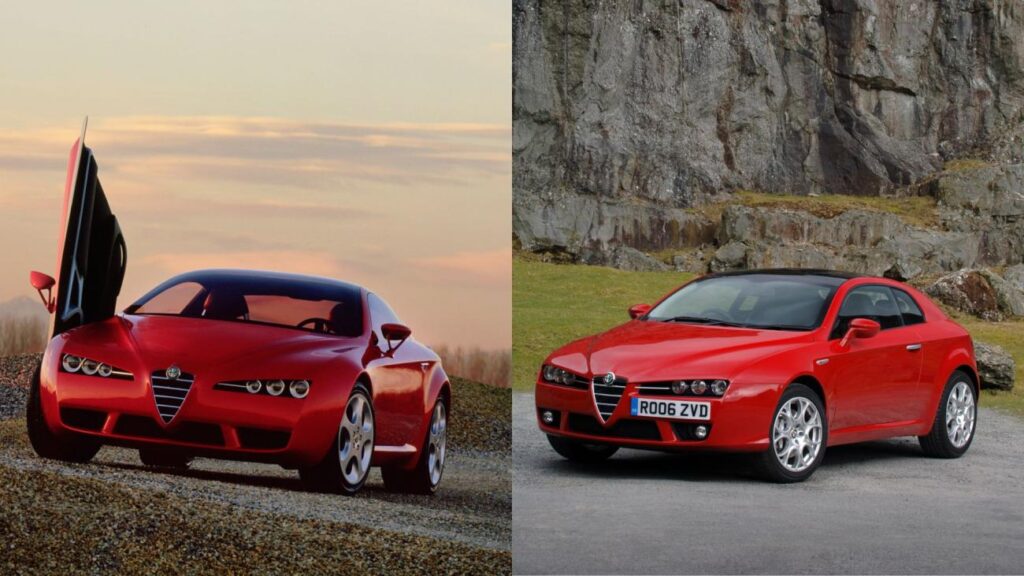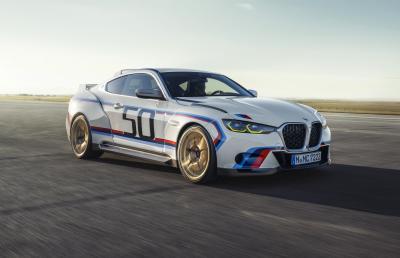Concept cars come in many forms, ranging from absolute flights of fantasy that will never see life beyond slowly spinning round on a motor show stand then gathering dust in a museum, to a pretty much finalised look at an upcoming production car.
There is a middle ground, though, where manufacturers will put out a concept designed to preview a new model, but with certain elements that are never intended to see the light of day. This is par for the course – after all, the main point of a concept is to drum up interest in a manufacturer’s upcoming production cars – but it can be a bit disappointing when an exciting concept is massively toned down for the road.
In no particular order, here are 10 concept cars that promised a little more than they ended up delivering in production guise.
BMW 3.0 CSL Hommage
The BMW 3.0 CSL Hommage was unveiled in 2015 as a retro callback to the 3.0 CSL homologation special of the 1970s, a car nicknamed the Batmobile thanks to its array of wings. The concept looked fantastic, with its big swollen arches and sharky front end.
By the time it had re-emerged as a limited-run production car in 2022, it looked like… an M4 with some carbon fibre bits stuck on. Which is basically what it was. Still, it did have an uprated 552bhp engine and came only with a six-speed manual, so we can’t complain too much.
Alfa Romeo Brera
2002’s Alfa Romeo Brera concept featured an astonishing, almost shooting brake body with scissor doors, penned by Giorgetto Giugiaro. The real appeal, though, lay in the mechanical package: a stonking 4.2-litre, 400bhp-ish Maserati V8 and a transaxle rear-wheel drive layout.
The production Brera that launched three years later kept the concept’s dramatic styling remarkably intact, but underneath, it was a different matter: an overweight, outdated platform, a range of underwhelming engines, and, in most cases, front-wheel drive.
Toyota FT-1
The appearance of the Toyota FT-1 concept in 2014 caused long-running rumours of the Supra’s return to kick into overdrive. Here was a thrusting front-engined, rear-wheel drive coupe with an unspecified powerplant churning out somewhere around 480bhp.
Those rumours became reality in 2019 when the Supra finally returned after a 17-year absence. The styling, though, had been toned down from the FT-1, and while the GR Supra was a rear-wheel drive, straight-six coupe as it deserved to be, all the mechanical bits came from BMW – not exactly a bad thing, but it surely robbed the Supra of some of its forebears’ character.
Renault Captur
Unveiled more as a showcase for Renault’s then-new design language than anything else, the Captur concept of 2011 was a funky little jacked-up two-door curiosity, a sort of half coupe, half dune buggy powered by a 158bhp twin-turbo diesel engine.
Two years later, the Captur name reappeared on a production car and… oh dear. One of the first of a new wave of very little crossovers, no amount of two-tone colour schemes could rescue the original Captur from total mediocrity.
Ford Iosis
2005 saw the unveiling of the Ford Iosis, another concept intended to show off a brand’s new house design language, this time Ford’s swoopy ‘Kinetic Design’. It was a low-slung, muscular saloon with a mad door arrangement – four butterfly doors, the rear ones hinged at the back so the whole thing opened up like a blooming flower.
Two years later, the Iosis had morphed into… the third-generation Mondeo. You know, the Casino Royale one. Frankly, it was a very good car in its own right, but we’re just a little disappointed we never got a quadruple butterfly-doored Mondeo, as unrealistic a prospect as that was.
Honda Urban EV
One of several false dawns for Honda’s grand electric ambitions, the Urban EV, presented in 2017, was a little retro box of a hatchback with comically oversized wheels and a face like a friendly robot.
In all fairness, the car that it previewed, the SEO-unfriendly Honda e, was still more stylish than pretty much any other little EV available at the time (or since, arguably), but just the tiniest bit disappointing after the concept. It was hamstrung by a poor range and high price, too, and barely lasted three years in production, leaving us to reminisce about what could have been.
Jeep Renegade
Jeep’s been using the Renegade name for a long time, initially as a trim level on various CJs and Wranglers, but in 2008, it popped up as a standalone badge on a concept car. It was a cool-looking open-top two-door buggy with an unusual diesel hybrid powertrain.
So, when we finally got a production Renegade in 2014, was it a realisation of this beach-ready funster? Erm, no. It was a small crossover based on a collection of ageing Fiat and Alfa Romeo bits. It wasn’t great when it was new, and it’s somehow still on sale in 2025, when its flaws are all the more glaring.
Kia Niro
The Kia Niro’s transition from concept to production was another case of Renault Captur syndrome. 2013’s concept was a rugged-looking little 4×4 with lots of fun styling features and supercar-style butterfly doors, because concept car.
A few years later, we got the first production Niro, a wholly worthy but painfully bland small crossover that would run away crying if you even pointed it towards an off-road trail. This, unfortunately, is what the people want.
Mitsubishi CZ3 Tarmac
We’d probably have forgotten about this one if it hadn’t featured in Gran Turismo 4, but the 2001 Mitsubishi CZ3 Tarmac could have been the Toyota GR Yaris of the early 2000s: a 1.5-litre turbo four-pot sending an unspecified amount of power (GT4 puts it at 218bhp) through the trick four-wheel drive system borrowed from the then-new Lancer Evolution VII, all packed into swollen, bulldog puppy bodywork. It did have a CVT, though. Booo.
None of this was massively relevant, because what the CZ3 really was was an amped-up glimpse at the Colt that would debut the following year. That would get a fascinating hot version in the guise of the Japan-only, 152bhp Ralliart Version-R, but it was hardly the little streetfighter previewed by the concept. There was a CZ3 trim level, though. Joy of joys.
Volkswagen Up
At first glance, the little VW Up seems to have survived the transition from 2007 concept to 2011 production car remarkably well. Same glassed-in rear hatch, same friendly face, same upkicked side window.
What was lost was the fascinating engineering of the concept. The production Up was a fantastic city car, but it was very conventional, with a front-mounted three-pot driving the front-wheels. The concept, meanwhile, was rear-engined, and one version had the same ultra-efficient two-cylinder diesel hybrid powertrain as the experimental XL1.
Read the full article here



